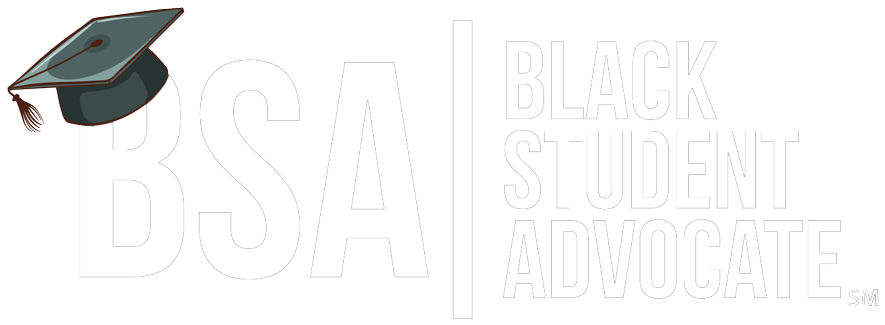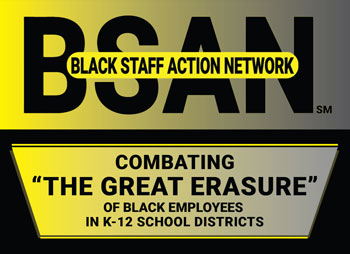At The Black Student Advocate Network, we understand that advocacy is not just a role—it’s a responsibility. Students with disabilities, especially Black and minority students, often face compounded obstacles due to misinformation, bias, and limited resources. Advocacy helps break these barriers by ensuring that students get the individualized support, representation, and dignity they deserve.
This comprehensive guide explores meaningful, practical, and impactful ways to advocate within schools—strategies that educators, parents, and leaders can implement today to spark lasting change. By adopting these practices, you can empower students, influence systemic improvements, and contribute to creating a truly inclusive school culture.
Below are six key areas that can transform how you advocate for students with disabilities within your school.
Promote Inclusive Education Through Awareness and Training
One of the most foundational ways to advocate for students with disabilities is by educating the school community. Awareness is the bridge between misunderstanding and progress.
Educate Staff on Disability Rights and Inclusion
Teachers and school personnel must understand legal protections such as IDEA (Individuals with Disabilities Education Act), Section 504, and ADA. Advocacy begins when educators can identify discrimination, improper accommodations, or inaccessible learning environments.
Through regular training on:
- Universal Design for Learning (UDL)
- Differentiated instruction
- Culturally responsive teaching
- Implicit bias reduction
- Behavior intervention strategies
…staff can better support diverse learners.
Promote a Culture of Empathy and Understanding
Inclusion starts with mindset. Schools should implement:
- Disability awareness activities
- Classroom discussions on diversity
- Workshops that teach students how to support peers
Positive peer interactions significantly improve students’ confidence and emotional well-being.
At The Black Student Advocate Network, we emphasize the importance of representation in training—ensuring discussions address how Black students with disabilities are often disproportionately disciplined or underserved.
Ensure Accessibility in All School Programs
Advocacy extends beyond academics. Ensure that students with disabilities have:
- Access to extracurricular activities
- Accessible field trips
- Invitations to leadership opportunities
Inclusion must exist in every part of school life—not just the classroom.
Encourage Student Voice and Self-Advocacy Skills
Advocacy is most powerful when students learn to advocate for themselves.
Teach Students About Their Rights
Students should understand:
- Why they receive accommodations
- What supports they are entitled to
- How to communicate their needs respectfully
This builds confidence and independence.
Build Self-Advocacy Into the Curriculum
Schools should provide:
- Self-confidence workshops
- Goal-setting lessons
- Leadership opportunities for disabled students
When students understand their abilities and challenges, they engage more actively in their education.
Create Safe Spaces for Students With Disabilities
Students need a place where they can share their concerns without fear of judgment.
Schools can offer:
- Peer support groups
- Mentoring programs
- Counseling
This emotional support strengthens academic success and resilience.
Address Bias, Discrimination, and Disproportionate Discipline
Many students with disabilities—particularly Black students—face systemic inequities in discipline, academic placement, and teacher expectations.
Acknowledge the Role of Implicit Bias
Bias can influence:
- How behavior is interpreted
- Whether a child is referred for evaluation
- How strictly discipline is applied
Staff must be trained to identify and unlearn bias.
Advocate for Fair Discipline Practices
Students with disabilities are often punished for behavior related to their disability.
Advocates should push for:
- Trauma-informed strategies
- Restorative justice practices
- Functional Behavior Assessments (FBAs)
- Behavior Intervention Plans (BIPs)
Discipline should help—not harm—students.
Promote Equity in Special Education Referrals
Black students are often:
- Under-diagnosed for learning disabilities
- Over-identified for emotional or behavioral disorders
To advocate effectively, schools must use culturally responsive evaluation tools and consider environmental, social, and instructional factors before labeling behavior as defiance.
At The Black Student Advocate Network, we lead the movement in addressing over-policing and misidentification in special education.
Strengthen School-Family Partnerships for Holistic Support
Families play a critical role in supporting students with disabilities. Advocacy requires a collaborative relationship between schools and homes.
Foster Transparent Communication
Schools should implement:
- Weekly check-ins
- Parent access to student progress portals
- Clear communication channels (email, text, meetings)
Parents must feel informed and involved.
Offer Family Workshops and Resources
Workshops can include:
- Navigating the IEP process
- Understanding disability rights
- Behavior support strategies at home
- Accessing community resources
The more empowered families are, the better outcomes for students.
Celebrate Family and Cultural Contributions
Families know their children best.
Schools should:
- Invite families to share student strengths
- Include family perspectives in decision-making
- Respect cultural norms and communication styles
Advocacy thrives when families feel valued.
Build an Inclusive School Environment That Normalizes Differences
A truly inclusive school is one where differences are seen not as barriers, but as strengths.
Make Classrooms Physically and Academically Accessible
Every classroom should offer:
- Accessible seating
- Visual schedules
- Multi-sensory learning materials
- Predictable routines
- Flexible teaching methods
Universal Design for Learning allows students of all abilities to thrive.
Promote Positive Peer Relationships
Students without disabilities should be taught:
- Empathy
- Patience
- Respect
- Inclusion practices
Schools can implement buddy systems, peer mentoring, and inclusive group activities.
Celebrate Disability Awareness Year-Round
Highlighting disability contributions helps normalize differences.
Schools can:
- Celebrate Disability Awareness Month
- Share stories of advocates and leaders with disabilities
- Display inclusive posters and resources
At The Black Student Advocate Network, we encourage schools to intentionally highlight diversity in all forms—race, ability, culture, and experience.
Conclusion
Advocating for students with disabilities is not a single action—it is an ongoing commitment to equity, empowerment, and inclusion. From strengthening individualized support to addressing systemic bias, each effort contributes to creating a school environment where every student can succeed. When educators, families, and communities unite to advocate for students with disabilities, meaningful change becomes possible.
At The Black Student Advocate Network, we remain dedicated to supporting students—especially Black students with disabilities—who deserve not only access but also opportunity, understanding, and advocacy.
By implementing the strategies outlined in this guide, your school can take significant steps toward ensuring that every student with a disability is seen, supported, and celebrated. Change begins with awareness, grows through action, and thrives in a community committed to equity.







Share This Page